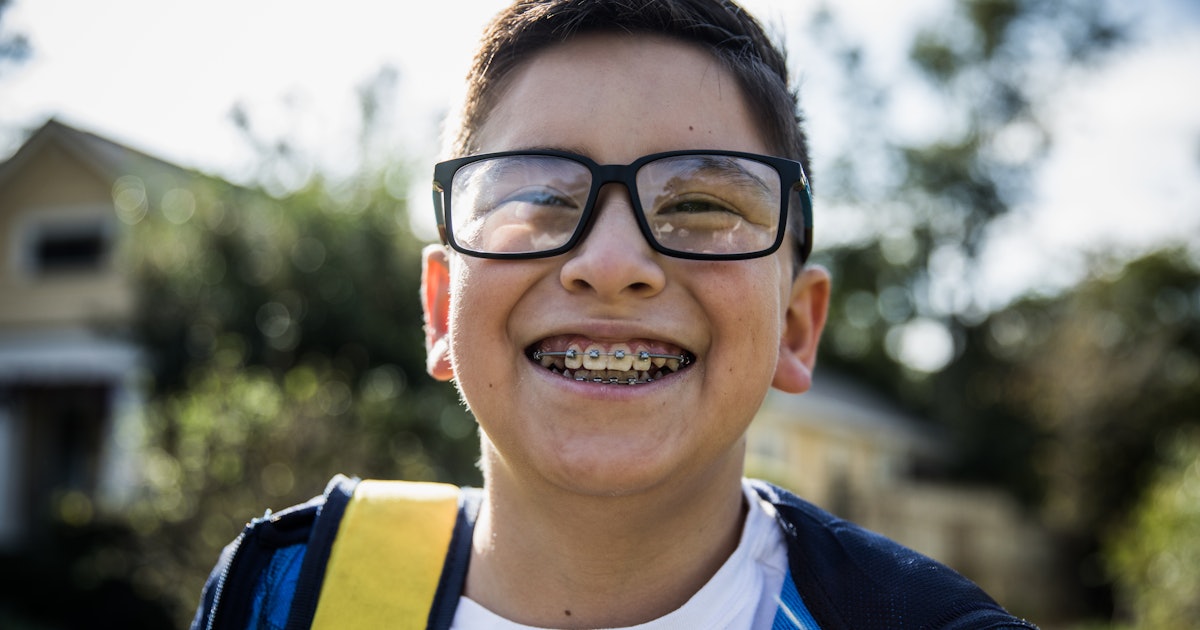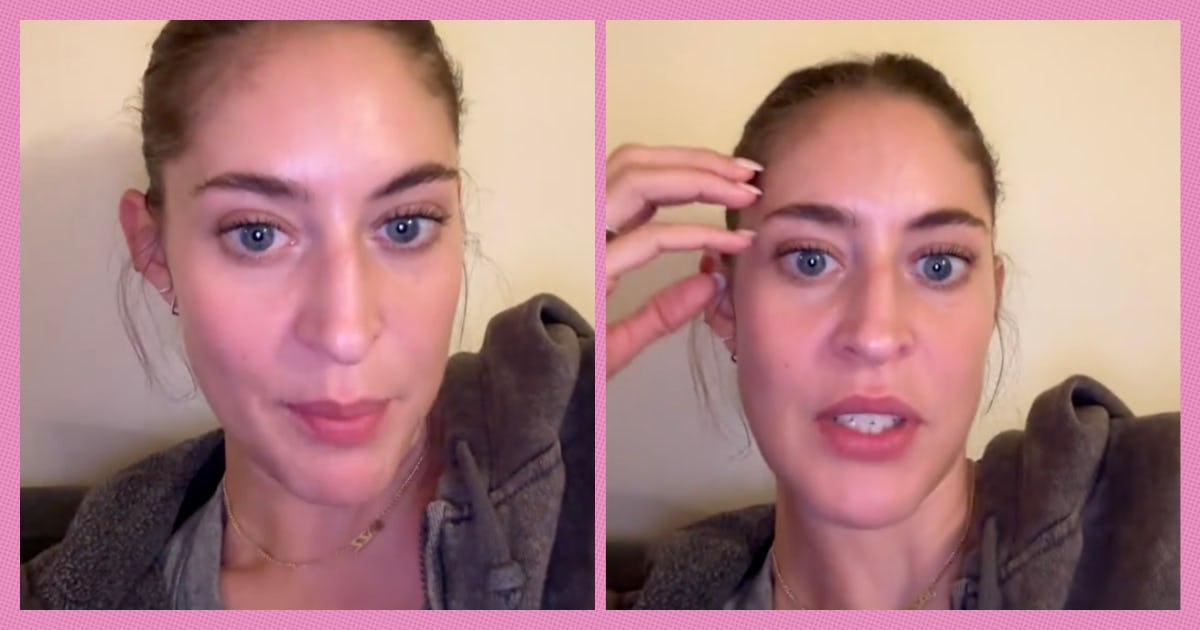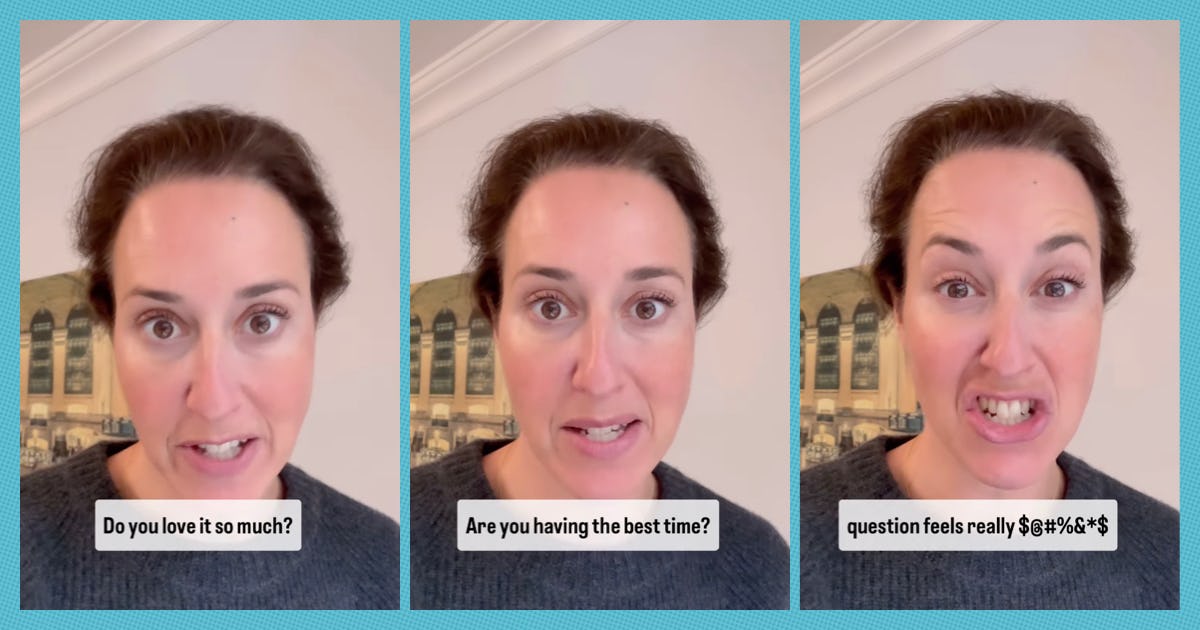Even if you’ve had braces yourself, it can be hard to know what to expect when your child gets braces—so many days have passed since then that the details are a little hazy. Maybe you remember feeling pain after wearing them but not how long ago, which is important information when you’re trying to figure out how much soup and ice cream to add to your grocery order. How do you make sure they take care of their teeth between meals and snacks at school?
Don’t worry: I’m 31 and about to finish 24 months of wearing braces, so the memory is still fresh. Here’s everything you need to know to prepare you and your child for your orthodontic adventure.
What to expect the day your child gets braces
According to the American Association of Orthodontists, you should prepare your child by talking positively about the process and all the benefits of getting braces. Putting braces on your teeth is painless. The orthodontist’s assistant will polish and dry your child’s teeth, then install the brackets using special glue and a UV light (just like going to a nail salon, but…with your face). Your child will have to wear one of the cheek retractors for this part, which may be a little uncomfortable after a while, but that’s not the worst of it.
Once all the braces are in place, the orthodontist will insert a wire into them and trim the ends so that it doesn’t dig into or dig into the mouth. Finally, they put rubber bands on each bracket to hold the wires in place. Due to the new tightness of the wire, your child’s teeth may be very sore soon after the appointment and for a few days afterwards.
How to help your child relieve pain from braces
Within an hour of getting my braces on, my entire mouth and face felt tight and uncomfortable. A few hours later at dinner time it was just too painful to chew and it lasted for days. I recommend stocking the pantry with plenty of soups—you don’t have to munch on chicken and stars—as well as mashed potatoes, ice cream, and smoothie toppings.
After a few days, your child may regain the ability to chew at least some softer foods. After each monthly tune-up, when they put on new wires or power chains (that’s a fancy, intimidating word for the rubber bands that all connect to close gaps in teeth), This soreness may come back for a day or two. Taking ibuprofen before my appointment and every four to six hours for the rest of the day relieves my soreness.
About halfway through the treatment, I no longer had pain after my appointment. I thought all the major corrections and space closures were done and the small adjustments my orthodontist made weren’t really noticed. Hope the same is true for your kids!
What to expect when your child gets braces: The first week
When I left the orthodontist’s office with my new braces, I was honestly surprised at how good they felt. mentally. It’s one thing when your teeth are crooked – and mine are very, very crowded – but it’s another thing to have shiny metal accentuate them. So if your child is self-aware, it might be good to plan something for the weekend that will boost their self-confidence: a new haircut they’ve always wanted, a cool pair of shoes on their wish list, whatever it is yes. Remind them that their teeth will soon look straighter, and in a few weeks they will get used to the braces on their teeth.
This may not be a common experience, but it’s something to be aware of if your child has any sensory issues: After a few days of wearing braces, I realized my anxiety was higher than usual because I couldn’t leave with my braces on. It’s just a new, unfamiliar feeling, there’s no escaping it. Distracting myself was the only thing that helped while my brain adjusted to the presence of braces. Again, if you think your child will feel similarly, planning outings with your child—hanging out with friends, going to the movies, etc.—will help capture their attention.
How to help your child care for their teeth with braces
In order to properly clean around the braces, your child will need a few supplies. Water flossers can help remove large pieces of food between teeth and brackets, and orthodontic floss picks can get between teeth and wires to tackle nooks and crannies. (Your orthodontist may recommend using small floss picks, but I could never get the hang of them, and floss picks work just as well.)
I recommend buying some cheap toddler toothbrushes from the store to brush the space between the top of the braces and the gums. The tiny brush head fits in tight spaces, and the super-soft bristles ensure your child won’t accidentally scrape their gums and cause gum loss. I have a 3 year old and his spare Hot Wheels toothbrush fits this perfectly.
While I’ve never struggled with tooth sensitivity before, during treatment I couldn’t even speak on a breezy day without the wind hitting my teeth and causing pain. Switching to Sensodyne while wearing braces was my lifesaver. If your child tries it and it doesn’t work enough, your orthodontist can prescribe a stronger version of the toothpaste you buy at the pharmacy.
Finally, you’ll want to make a small bag that you can take with you to take care of your child’s braces at school and on the go. Here’s what I’ve been keeping:
- Use floss picks and orthodontic brushes to remove food from braces after eating
- extra rubber bands
- Wax in case the wires start to puncture
- Antibacterial wipes or hand sanitizer – rubber bands and wax require putting your hands in your mouth, and sometimes you can’t get to the sink to wash your hands first.
It seems like there’s a lot of information out there these days, and if we’re honest, your child will probably hate braces at first. But after a few weeks, things will become easier to handle for both of you, and it’s true: a year or two with these things goes by much faster than you think.




